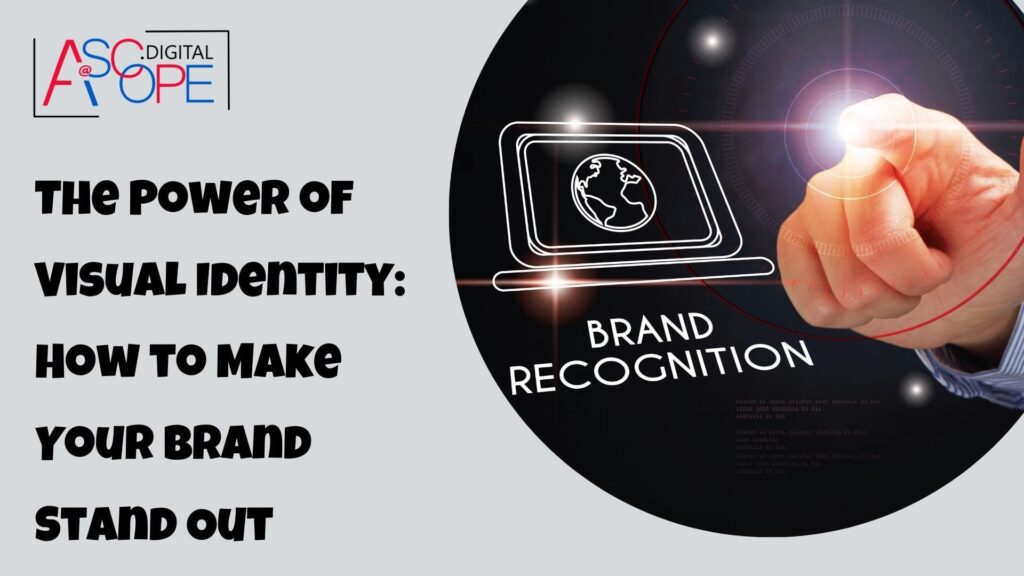In today’s competitive marketplace, where every brand strives for attention and recognition, developing a strong visual identity is paramount. Your visual identity is more than just a logo or a color scheme; it’s the cohesive representation of your brand’s personality, values, and promise to your audience. This article explores the essential elements of visual identity and provides practical tips on how to create one that resonates and stands out in the minds of consumers.
Understanding Visual Identity
Visual identity encompasses all visual aspects that represent your brand, including:
- Logo: The cornerstone of your visual identity, the logo should be memorable, scalable, and reflective of your brand’s essence.
- Color Palette: Colors evoke emotions and perceptions. Choose colors that align with your brand’s personality and resonate with your target audience.
- Typography: Fonts communicate not just words but also tone and personality. Consistency in typography across all brand materials is key.
- Imagery Style: Whether photography, illustrations, or graphic elements, the style of imagery should reinforce your brand’s message and values.
- Design Elements: Consistent use of shapes, patterns, and other design elements can enhance recognition and brand recall.
Steps to Build a Strong Visual Identity
1. Define Your Brand Identity
Before creating visual elements, clarify your brand’s identity. Ask yourself:
- What are your brand values?
- What makes your brand unique?
- Who is your target audience?
- What emotions do you want to evoke?
2. Design Your Logo
Your logo should be simple, memorable, and versatile. Consider hiring a professional designer who understands your brand’s essence. Ensure your logo works well across different platforms and sizes.
3. Choose Your Color Palette Wisely
Colors play a significant role in brand perception. Conduct research on color psychology to understand how different colors affect emotions and behaviors. Select a primary color palette and complementary secondary colors that reflect your brand’s personality.
4. Develop Consistent Typography
Select fonts that align with your brand’s voice—whether traditional, modern, or playful. Use no more than two or three fonts consistently across all communications to maintain coherence.
5. Create a Style Guide
Compile all visual elements into a comprehensive style guide. This document ensures consistency in how your brand is represented across various channels—from your website to social media and marketing materials.
Leveraging Visual Identity for Brand Success

1. Establish Brand Recognition
A strong visual identity helps consumers recognize your brand instantly amidst competitors. Consistency across all platforms reinforces brand recall and builds trust over time.
2. Enhance Brand Perception
Visual elements evoke emotional responses. Use your visual identity to convey professionalism, creativity, trustworthiness, or any other desired brand attributes.
3. Stand Out in a Crowded Market
A unique visual identity sets your brand apart. Focus on creating a distinctive visual language that resonates with your target audience and leaves a lasting impression.
4. Adapt to Different Platforms
Ensure your visual identity is adaptable. It should look great on social media profiles, mobile apps, packaging, and even offline materials like business cards and signage.
5. Evolve Over Time
While consistency is key, periodic updates to your visual identity can keep it relevant and appealing. Monitor industry trends and consumer preferences to ensure your brand remains fresh and engaging.
Enhance Traffic and Sales by Mastering Your Website’s Structure
Optimizing your website architecture is crucial for creating an intuitive and user-friendly experience. A well-structured website not only makes navigation easier for visitors but also significantly improves your search engine rankings. By organizing your content logically, ensuring quick load times, and utilizing internal linking effectively, you can create a seamless user journey that encourages engagement and conversions. Thus, improving traffic and sales for your website. A clear, hierarchical structure helps search engines understand your site better, making it more likely to appear in relevant searches. Additionally, addressing common issues such as broken links and duplicate content can further enhance your site’s performance. Read more on the other reasons why your website isn’t getting traffic, and discover practical steps to elevate your online presence. Embrace these strategies to unlock your website’s full potential and achieve lasting success in the digital landscape.
Conclusion
In conclusion, the power of visual identity cannot be overstated in today’s competitive business landscape. By carefully crafting your logo, color palette, typography, and other design elements, you can create a visual identity that not only represents your brand but also resonates with your audience on a deeper level. Invest time and resources into developing and maintaining a strong visual identity—it will pay off in brand recognition, customer loyalty, and overall business success.
Remember, your visual identity is more than just aesthetics; it’s the visual representation of your brand’s story and values. Embrace it, nurture it, and let it speak volumes about who you are and what you stand for.


